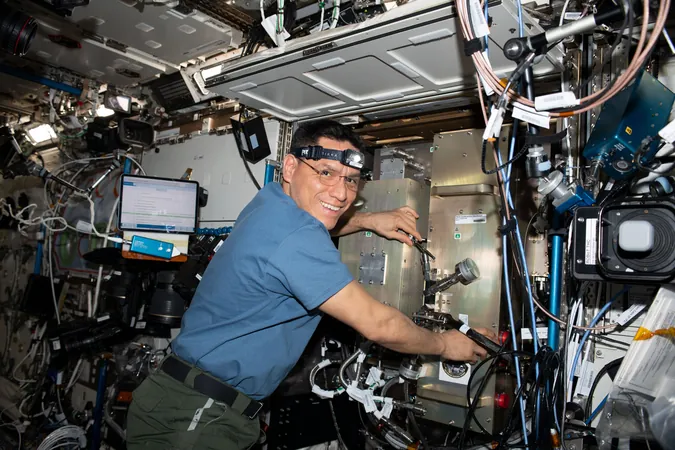
Groundbreaking Space Research Unlocks Secrets of Boiling and Condensation in Microgravity!
2024-09-26
Author: Ming
Breakthroughs in Space Research
In a significant leap for space exploration, Purdue University, in collaboration with NASA's Glenn Research Center, has successfully concluded a groundbreaking series of experiments aboard the International Space Station (ISS). After a decade of preparation and two years of active experimentation, the Flow Boiling and Condensation Experiment (FBCE) has delivered a treasure trove of data crucial for future space missions.
Aiming for Safety in Extreme Environments
Led by Purdue professor Issam Mudawar, one of the foremost experts in flow boiling and condensation, the FBCE aims to answer critical questions about how to manage heat and cooling systems in the extreme environments of space. As astronauts prepare for longer missions to the Moon and Mars, understanding how boiling and condensation work in microgravity becomes paramount.
"Creating a reliable thermal management system is key to ensuring human safety and efficiency in outer space," Mudawar stated. "The temperature on the lunar surface can swing dramatically from minus 410 degrees to 250 degrees Fahrenheit. Without effective cooling mechanisms, sustaining life and conducting missions is unfeasible."
Understanding Fluid Behavior in Space
The experiments conducted by FBCE focus on flow boiling—where heat is removed by flowing liquid that vaporizes into gas and then condenses back into liquid. While this phenomenon has been studied extensively on Earth, its behavior in microgravity had remained largely a mystery until now.
NASA recognized the need for research on fluid behavior in space, leading to the selection of Mudawar's proposal. His work has implications beyond space exploration; it is expected to advance technologies related to spacecraft propulsion, in-space refueling, and even create systems for sustainable habitats on other planets.
Complexity and Future Research
The FBCE, about the size of a refrigerator, houses two test modules designed by Purdue. The cutting-edge fluid system, integrated with avionics, enables researchers to perform experiments with high precision and gather vital data autonomously from the ground. During the experiments, the team has generated a massive amount of data, pushing the boundaries of existing scientific knowledge.
“This is one of NASA's largest and most complex experiments in fluid physics research,” Mudawar emphasized, revealing that over 70 research papers have been published since the project’s inception, effectively forming a ‘textbook’ on how boiling and condensation operate in lower-gravity environments.
The Legacy of FBCE
The legacy of the FBCE doesn't end with its mission conclusion. The facility will continue to be utilized by other researchers investigating fluid dynamics in outer space. “We envisioned FBCE as a national resource for the scientific community,” Mudawar added.
Looking Ahead to the Future
With the data gleaned from these experiments, the path is clearer for the future of human exploration beyond Earth. As the world watches closely, the findings of the FBCE could lead to groundbreaking innovations, paving the way for humanity's next giant leap into the cosmos. Will we soon have the technology to sustain life on Mars? The answer lies in the revelations of this remarkable research!

 Brasil (PT)
Brasil (PT)
 Canada (EN)
Canada (EN)
 Chile (ES)
Chile (ES)
 España (ES)
España (ES)
 France (FR)
France (FR)
 Hong Kong (EN)
Hong Kong (EN)
 Italia (IT)
Italia (IT)
 日本 (JA)
日本 (JA)
 Magyarország (HU)
Magyarország (HU)
 Norge (NO)
Norge (NO)
 Polska (PL)
Polska (PL)
 Schweiz (DE)
Schweiz (DE)
 Singapore (EN)
Singapore (EN)
 Sverige (SV)
Sverige (SV)
 Suomi (FI)
Suomi (FI)
 Türkiye (TR)
Türkiye (TR)